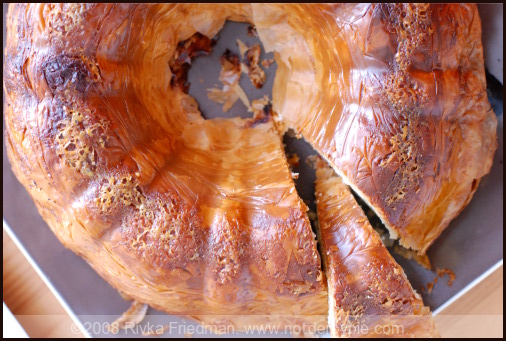 Feta Phyllo Torte
Feta Phyllo Torte
Of all the incredibly culinary feats out there (and there are plenty), one of which I'm truly in awe is the ability to consistently serve vegetarian food that fees like a main dish. As I've written before, one of the challenges to purely vegetarian cooking is that often, everything on the table looks like a side dish, and there's no one thing that, when brought to the table, elicits the oohs and ahhs of, say, a whole roast chicken. There are a few people who are particularly excellent at this. One is Deborah Madison, author of Vegetarian Cooking for Everyone (one of my favorite cookbooks to read; I often find myself leafing through it while killing time at Barnes and Noble). Madison understands the challenge of creating a "wow factor" when serving vegetarian entrees, and she conquers that challenge seemingly effortlessly. Her books are endless sources of inspiration for meatless entertaining.
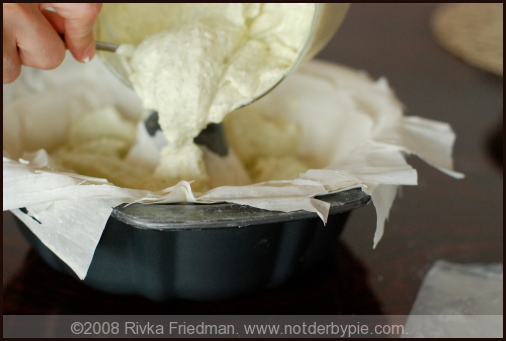
Another, though she may not intend to be (given her well-publicized love of meat) is Melissa Clark, a food columnist for NYT and recipe writer extraordinaire. Reading Melissa's column, I not-infrequently stumble upon a really new idea for a vegetarian entree. One excellent example is her cornbread and broccoli rabe strata, a vegetarian Thanksgiving main that doubles as a side for the turkey eaters. Another, for a phyllo feta torte, was published just a couple weeks ago, and after reading her recipe, I had an undeniable urge to rush into the kitchen and make it, immediately.
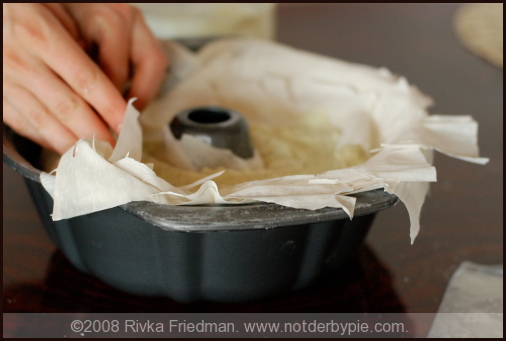
Originally called "No-fear Phyllo Torte," Clark's recipe originates in a dinner party hosted by a lauded French literature professor and his Greek wife, for whom phyllo is second-nature. Clark claims intimidation, but her recipe proves her an equal master of this domain. In the torte, made in a bundt pan for a particularly impressive presentation, thin, crisp layers of butter-soaked phyllo cloak a tender filling of feta, cottage cheese, dill and nutmeg. Sound like a spinachless spanikopita? Think again: the finished product is drizzled with honey before serving, for an irresistible hit of sweet to balance the rich, salty torte. Stop me from drooling.
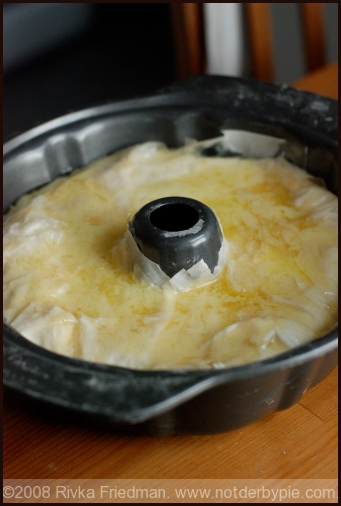
Clark was intimidated when she first saw the torte emerge from the oven, and wondered whether she needed to be Greek in order to make it successfully; I had an all-out panic attack when, just before serving the torte, I realized that I had used salted butter in place of the unsalted butter called for in the recipe. It didn't matter; I had used less salty Greek feta in the filling, which offset the extra salt in the crust. Other changes I made to Clark's original recipe include swapping out some of the cottage cheese for extra feta (since cottage cheese generally gives me the creeps, and 3 cups sounded like a lot), upping the level of dill and nutmeg for added kick, and cutting the butter from 3 sticks to 1 (because who needs 3 sticks of butter in anything? and 1 was more than enough to coat the whole torte and make the insides crispy). Other than those changes, I found this recipe absolutely to die for and would make it again in a flash. I actually served it with some homemade rhubarb chutney, which I'll blog in a future post, and I was really pleased with the combination. The tanginess of the rhubarb brought out the acidity in the feta and the chutney provided a nice textural contrast to the torte. An all-out thumbs up from this happy eater -- I recommend you give this a go; your guests will be thankful -- and maybe even intimidated.
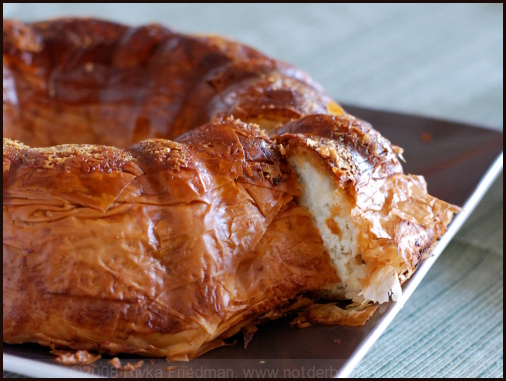
Sonia's Phyllo and Feta Torte with Dill and Nutmeg Time: An hour and a half, plus cooling adapted from Melissa Clark, inspired by her husband's friend's wife Sonya, via The New York Times
Time: An hour and a half, plus cooling
1 1/2 pounds Greek feta cheese, crumbled (I used feta from a local Mediterranean market, but TJ's carries Greek feta that's pretty good) 2 cups cottage cheese 3 large eggs 1/3 cup chopped fresh dill 1/4 cup grated Romano cheese (I used Parmesan, which was what I had on hand) 1 teaspoon freshly grated nutmeg 1/2 teaspoon freshly ground black pepper 1 1-pound box phyllo dough, thawed overnight in refrigerator if possible 1/2 cup (1 stick) unsalted butter, melted
Greek honey, for serving (Clark says this is optional but I say it's a must).
1. Heat oven to 375 degrees. combine feta, cottage cheese, eggs, dill, 2 tablespoons Romano, the nutmeg and pepper in a food processor and pulse just to combine (Clark says you can also use a large bowl and a fork). Clark also says the mixture should be chunky, but I made mine smoother.
2. Sprinkle remaining 2 tablespoons Romano into a Bundt pan. Drape a sheet of phyllo on top of Bundt pan, poke a hole into phyllo with your finger where center tube is and push phyllo into pan to line it. Do this with another phyllo sheet, but place it perpendicular to first sheet. The first couple of sheets will seem disorderly and may collapse some, but as you start layering them, the process will get easier and the sheets will keep their shape. Continue adding phyllo sheets in alternating directions until all sheets are used. Edges of phyllo should hang over edges of bundt.
3. Scrape cheese filling into pan, and fold edges of phyllo over filling. Using a sharp knife, poke many holes (at least 20) in dough that reach all the way to bottom of pan. Then pour melted butter over the torte; some will seep into holes, but a fair amount will pool on top of torte, which is fine. I actually poured the butter before poking the holes, and my torte tasted perfectly delicious, so fret not.
4. Place Bundt pan on a baking sheet and bake for about 1 hour 15 minutes, or until torte is puffy and golden brown. Allow torte to cool in pan for 1 to 2 hours before inverting onto a plate and slicing. Serve warm or at room temperature, with honey and/or sweet chutney.
Yield: 10 to 12 servings.